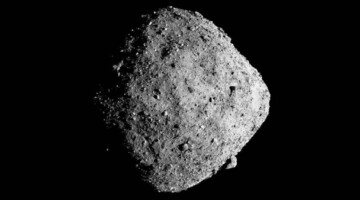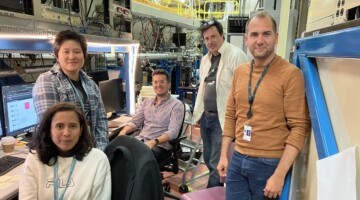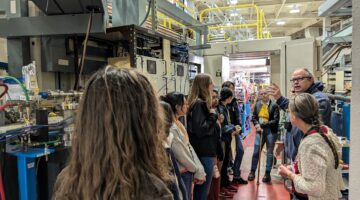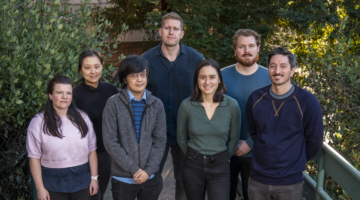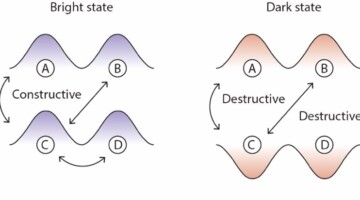The Advanced Light Source and Molecular Foundry provided powerful tools to study asteroid samples returned by NASA’s OSIRIS-REx mission to the asteroid Bennu. Researchers found a telltale set of salts formed by evaporation that illuminate Bennu’s watery past. Read more »
All News & Updates
2025 ALS-United New Year’s Message
Interim ALS Director, Andreas Scholl and Interim ALS-U Project Director Dimitri Argyriou usher in 2025 with a message for you on the ALS-U project and the priorities for the new year. Watch their conversation or access the full transcript. Read more »
Autonomous Beamlines: Harnessing Bayesian Optimization to Revolutionize Accelerator Science
Scientists at the Advanced Light Source are developing automated beam optimization systems, collaborating with other light sources to deploy common controls across facilities. Using machine learning, they demonstrated automated beamline alignment that optimizes beam size and flux at the push of a button. Read more »
CU*IP ALS Tours
The American Physical Society holds an annual Conference for Undergraduate Women and Gender Minorities in Physics (CU*IP). This year’s Northern California edition was hosted at UC Berkeley with support from Berkeley Lab and LLNL. After the end of the conference on Sunday, January 26, about 60 participants visited the Lab and got to see NERSC and the ALS. Tour guides for the ALS were Hendrik Ohldag and Ina Reichel, who were also on the local organizing committee of the conference.
New UEC Members for 2025
Welcome to new 2025 members Joshua Del Mundo, Wei He, Matt Landsman, Lowell Miyagi, and Brandy Toner. Special thanks to the outgoing members, Inna Vishik, Connor Bischak, Sharon Bone, Devin Grabner, Yu He, and Grant Shoffner for their service. Read more »
Understanding the Role of Manganese in Fuel Production Catalysts
Using specialized equipment at the Advanced Light Source (ALS), including a custom-built reaction cell, researchers uncovered the role of manganese in cobalt manganese oxide catalysts used for fuel production. Read more »![]()
![]()
Identification and Structural Characterization of Antibodies for Severe Malaria
Researchers used x-ray crystallography at the ALS to characterize how two newly discovered antibodies prevent the protein interactions responsible for severe malaria. Understanding this mechanism offers novel insights for vaccine development. Read more »![]()
![]()
Hide-and-Seek with Sneaky Electrons in Solids
Researchers used angle-resolved photoemission spectroscopy (ARPES) at the Advanced Light Source (ALS) to demonstrate the existence of dark—state electrons in solids for the first time, providing insights into complex phenomena in physics, such as high-temperature superconductivity and optoelectronics.
Read more »
Call for 2021 to 2024 Publications
Our next Department of Energy quadrennial review is coming up soon. Please help ensure our records include all publications resulting from work done, in whole or in part, at the Advanced Light Source (ALS), especially those published in 2021 to 2024. Read more »
March 5, 2025, Deadline for General User Proposals—Updated Proposal Writing Guidelines!
The User Office is accepting new General User Proposals (GUPs) from scientists who wish to conduct research at the ALS in the 2025-2 (August–December) cycle. The deadline for submissions is March 5, 2025. Please review the updated proposal guidelines, with thanks to feedback from proposal submitters and reviewers. Additional beamtime cycles will be run before the ALS-U dark time, and we will share more information as it becomes available. Read more »
- « Previous Page
- 1
- …
- 6
- 7
- 8
- 9
- 10
- …
- 140
- Next Page »
